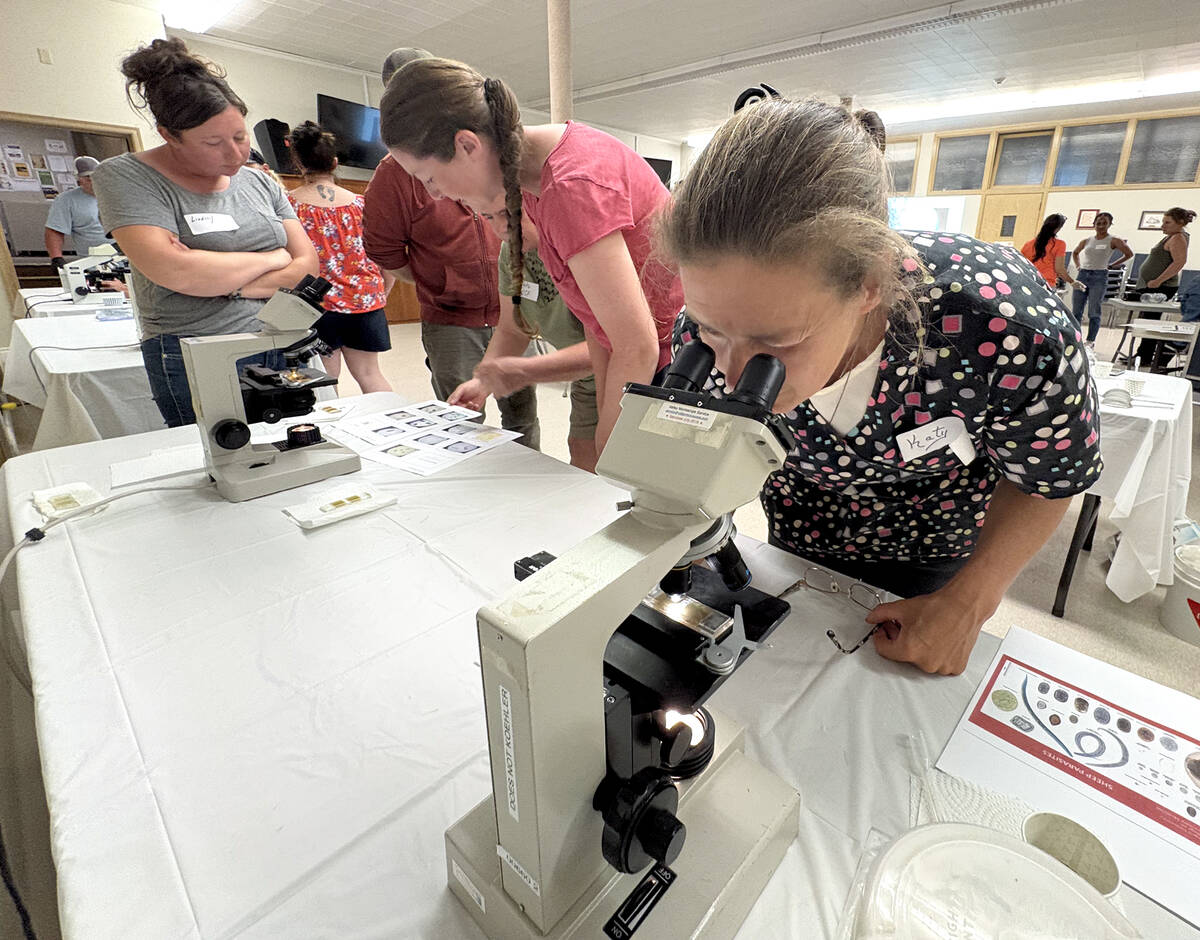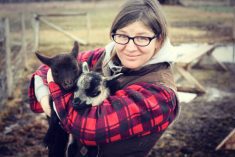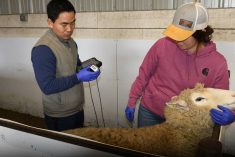Sheep prices are down, way down from when Gail Kasprick decided to get into the business. But she’s looking at the bright side.
“It sounds as though it’s going to improve,” the Neepawa-area producer said while attending a session on sheep marketing at Ag Days.
“But for someone like me just getting into it, it wasn’t a bad thing, because when I was buying the prices were down.”
Sheep are still a good way of diversifying farm income, even if prices have fallen from peaks reached in 2011, the provincial sheep specialist told farmers attending Ag Days.
Read Also

Smart deworming for sheep starts with individual fecal egg counts
Fecal egg count tests are one step to managing dewormer resistance and managing sheep parasites on Canadian sheep farms to maintain flock health.
“There is a lot of scare in the industry,… but the industry is not dying,” Mamoon Rashid said during his Ag Days presentation at the Brandon Keystone Centre.
Lamb reached prices as high as $2.50 a pound in 2011, but is currently selling for about $1.30 or $1.35 in major markets like Ontario.
“Manitoba is always about 20 cents, or 25 cents less than Ontario, but that is the cost to ship it over there anyways,” said Rashid, a small ruminants business development specialist with Manitoba Agriculture, Food and Rural Development.
He said the recent drop in price may seem intimidating, but noted it appears more significant than it actually is because prices were unusually high two years ago.
Rashid couldn’t hazard a guess as to why prices increased by so much in 2011, but said current lamb prices are well within normal price fluctuations.
Kasprick said buying in when the market is down meant some of her animals only cost $175. And although she only has 16 ewes — both meat and fibre — she plans to expand to augment her cattle operation.
“It’s a diversification thing,” she said. “It’s my version of an off-farm income without leaving the farm.”
Rashid said the number of cattle producers turning to sheep as a means of diversification has increased.
But even as the number of sheep on Manitoba’s farms creeps up, stocks still haven’t reached levels seen in 2006 when 65,000 sheep were in the province. In 2012, Manitoba only had 56,000 sheep, up slightly from 53,000 in 2011, Rashid said.
He noted a federally inspected slaughter plant could help expand the province’s sheep industry.
Currently, only provincially inspected plants slaughter lamb, meaning meat processed in Manitoba can’t be sold outside of the province.
“The biggest thing is the market, our industry is dependent on eastern markets,” Rashid said. “So even if we have our local supply chain we don’t have enough local consumption. There is only so much lamb we can consume in Manitoba.”
Although demand for lamb has increased in the province along with growing communities of new immigrants, Manitoba still can’t compare with communities like Vancouver or Toronto, Rashid said.
But Manitoba could help supply those markets more effectively with a federal slaughter plant, rather than shipping slaughter animals east.
“We have to ship outside, either live of processed,” he said.


















